Plant identification? There’s an app for that—actually several!
2024 update, Amaranth species plus trees/shrubs added! Plant identification apps for smart phones have seen significant improvements over the past several years, offering the opportunity to take a photo and get an instant identification in many cases.

We are driven to identify plants for many reasons; sometimes it is a curiosity about the world around us, other times it is out of the desire or need to manage areas like gardens, agricultural fields, restored habitats, and/or natural preserves. Plants are the foundation of food webs and they are tied to our understanding of how ecosystems function. Plant identification has been and continues to be a matter of familiarity, knowledge passed down through mentorship by family or friends, or perhaps something learned in school. One can also seek expert advice. Plant identification is one of the many services offered at Michigan State University (MSU) Plant & Pest Diagnostics and the MSU Herbarium, and help is available through the Michigan State University Extension Lawn and Garden Hotline (1-888-678-3464) and Ask Extension through eXtension.
There are several smartphone apps available to assist with plant identification. I began evaluating plant identification apps in 2018 for use in the weed science laboratory class at MSU (i.e. CSS226L) and for presentations to various garden and commodity groups. From 2018-2020, I evaluated a minimum of six apps (available for both Android and iOS smartphones) using 10-12 plants, with the best performing apps carrying over to the next year’s evaluation. In the fall of 2021, I drastically increased the number of identifications used to rank the apps by involving groups of university students enrolled in the lab.
Since 2018, the students and I have evaluated a total of 16 apps (see complete list at the bottom of the article). In 2023, all the apps tested used photo recognition software and geolocation information to identify plants, but some tested in the past required more descriptive input from the user, similar to traditional plant keys. Most are free or have a free version. It is important to read all terms prior to downloading or purchasing apps. This assessment is for educational purposes only. Reference to commercial products or trade names does not imply endorsement by MSU Extension or bias against those not mentioned.
The students in the weed science lab learn plant identification skills as an integral part of the curriculum and the addition of the app evaluation supplements traditional methods. Lab groups were asked to photograph 10 plants labeled with their common and scientific names at the historic W.J. Beal Botanical Garden on the campus of MSU (Figure 1, United States Department of Agriculture Hardiness Zone 6a). Photos were not edited and aimed to realistically replicate the average person’s input. It should be noted that many of the apps provide detailed descriptions or videos on how to best take photos to increase chances of success. We did not discuss specific instructions prior to the class testing the apps, reflecting the average user’s likelihood of reading instructions.
Identifying weeds at all life stages and various growth habits is important for our students when making management decisions. Therefore, groups were required to photograph one plant from each of the following categories: flowering broadleaf ornamental species (Figure 2), flowering and vegetative broadleaf weeds (Figures 3 and 4), flowering and vegetative grass (or grass-like) weeds (Figures 5 and 6), an Amaranth or grass seedling (Figure 7), and a winter annual seedling (Figure 8). We also added one deciduous and one evergreen tree or shrub species (Figures 9 and 10, respectively) to the list in 2023 after requests for that type of information. The last plant was their choosing, but it was recommended that they use common agricultural and turf weeds from the garden’s collection.
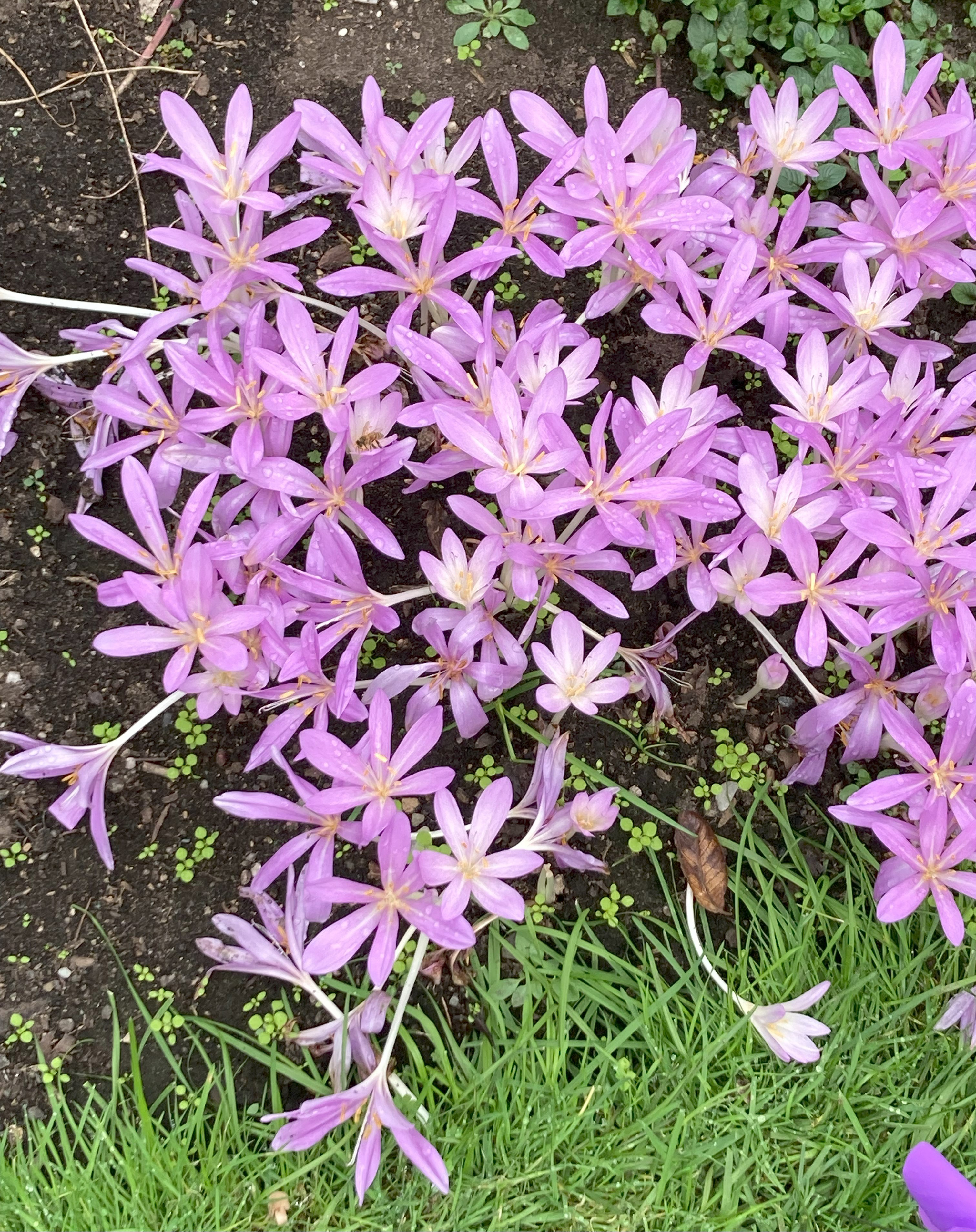
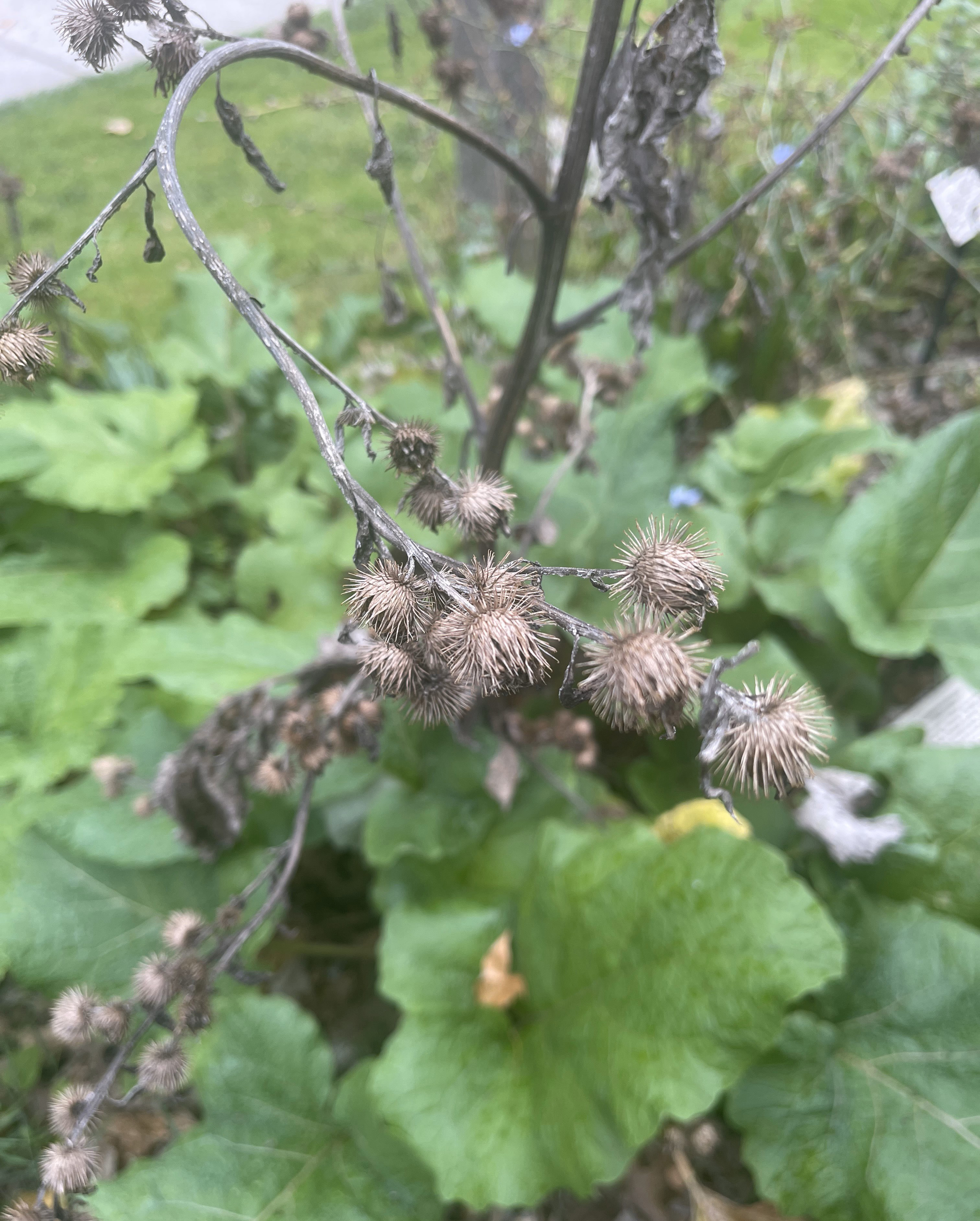
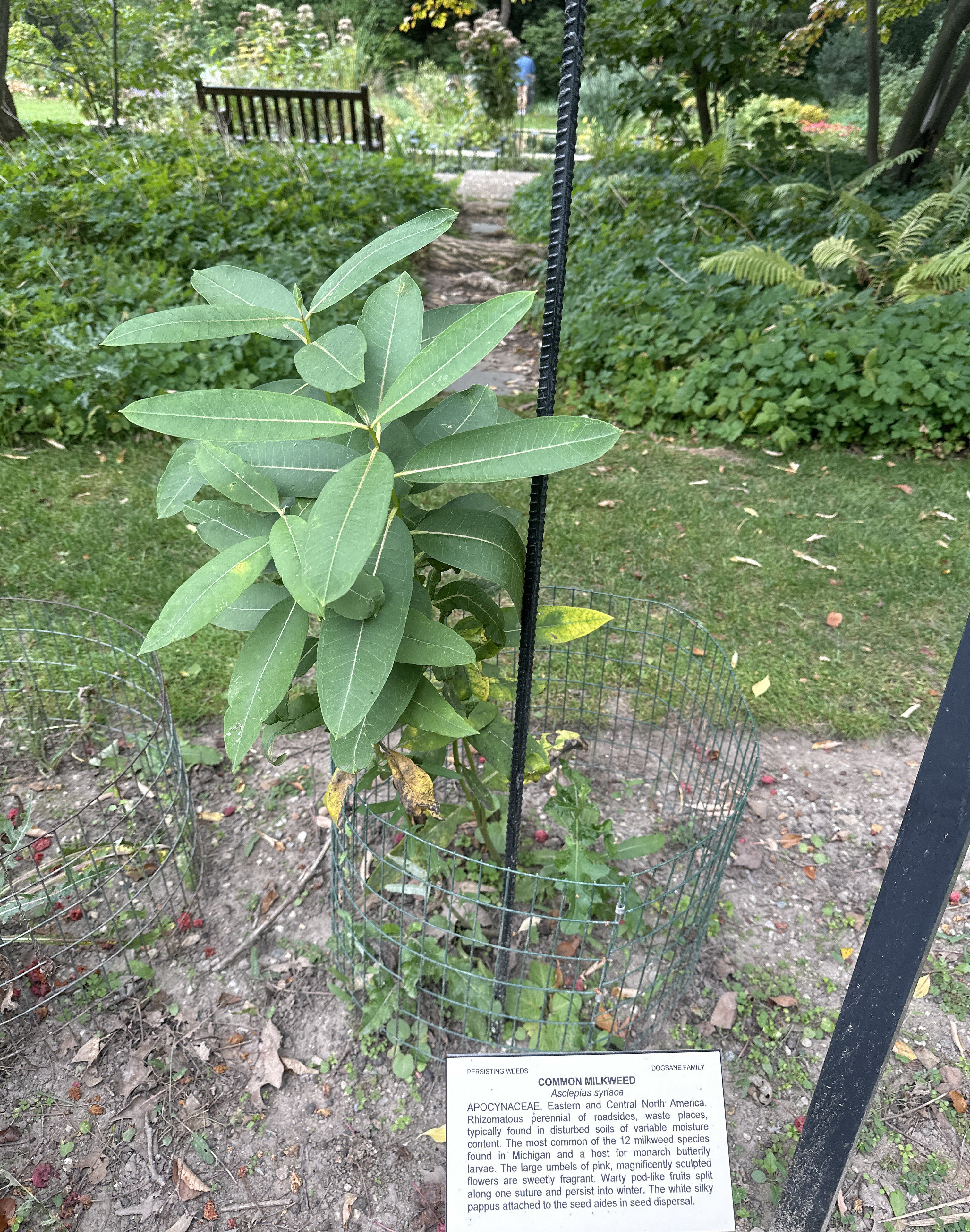

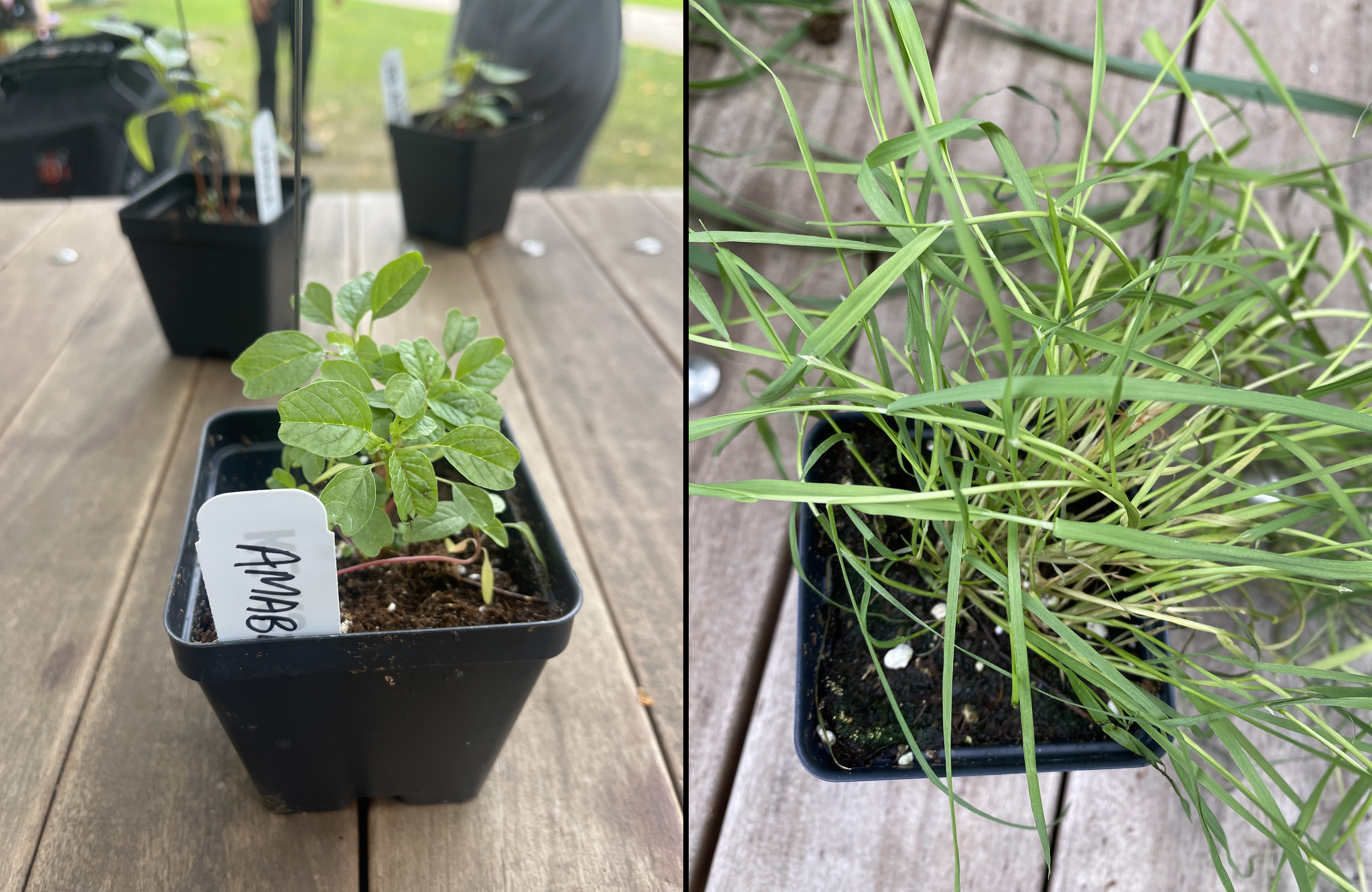

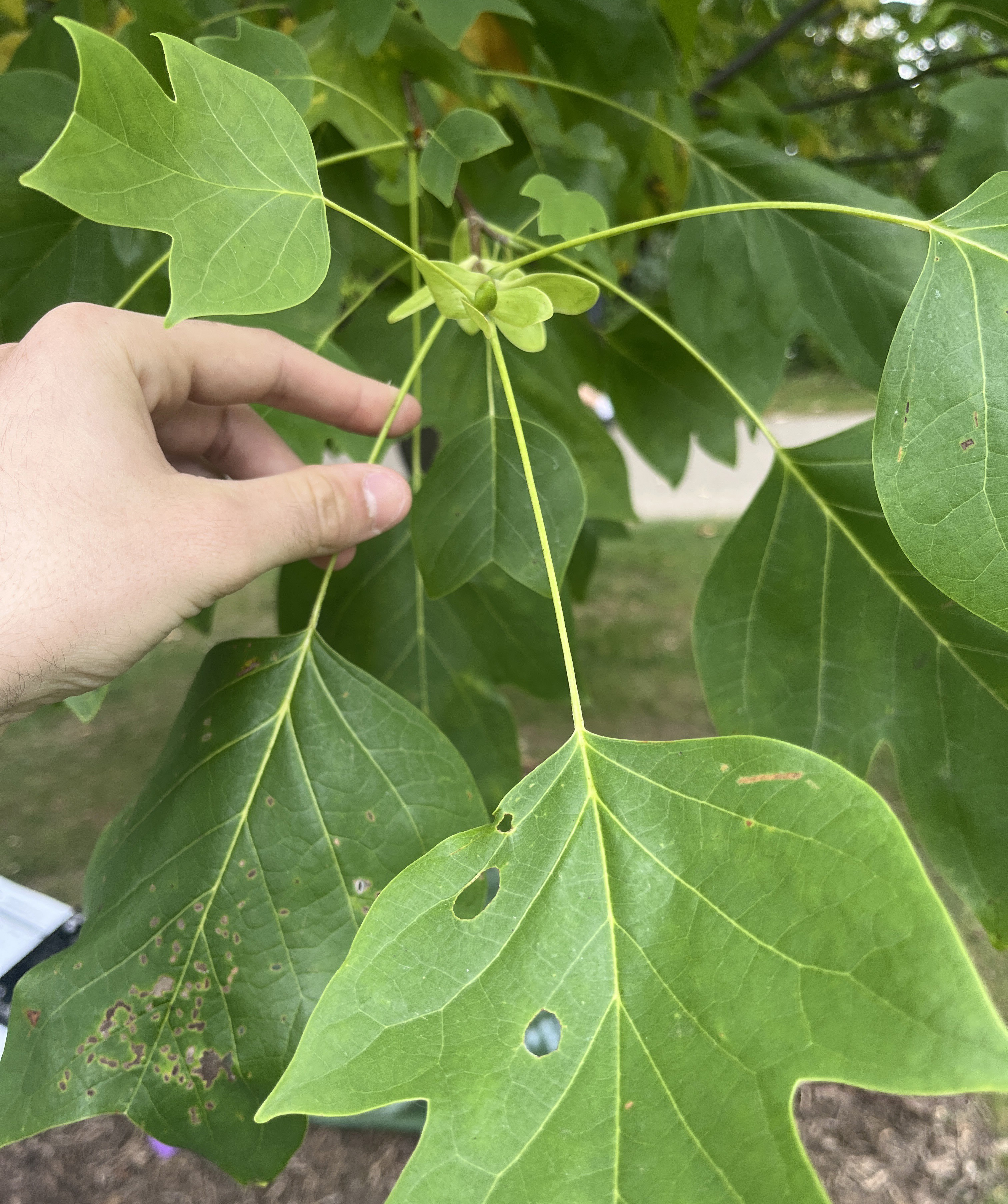
All groups were assigned the same six apps to evaluate in 2023 (Table 1). Within the categories mentioned above, the students input the same photos into each of the apps and recorded the produced identifications as correct, partial or incorrect in comparison to the specimen labels at the garden. Correct identifications were 100% accurate for the scientific name (i.e., Latin genus and species; e.g., large crabgrass is Digitaria sanguinalis). Partial was assigned when an app correctly identified the plant to the genus level, but not to species [e.g., a photo of green foxtail was identified as Setaria faberi (giant foxtail) instead of the correct Setaria viridis (green foxtail)] or the correct answer was not the highest suggestion on the list for apps that make multiple suggestions. These answers may still be helpful towards successful identification but are not entirely correct. Incorrect was designated if neither of the above were true. Using this process, each of the six apps was evaluated 150 to 180 times in 2023, up to 19 times per category. Ultimately, the apps were ranked based on the comparative percentage of correct identifications across all categories.
|
Table 1. Plant identification apps evaluated and ranked by the MSU weed science laboratory students in fall 2023 (1 = best performing based on percentage of correct identifications). All use geolocation data, if allowed. |
|
|---|---|
|
App name |
Placement |
|
Google Lens |
6 |
|
iNaturalist |
5 |
|
PlantIn |
4 |
|
PlantNet |
3 |
|
PlantStory |
2 |
|
PictureThis |
1 |
The top performing app in the 2023 evaluation outlined above was PictureThis, with 73% of the suggested identifications being correct (Figure 11). If the partial ratings (16%) are added to the correct ratings, we see that the app was helpful 89% of the time averaged across all plant categories. Following this lead were PlantStory (48% accuracy) and PlantNet (40% accuracy). If you add in the partially correct answers, these apps we helpful 65 and 67% of the time, respectively. The remaining three apps fell between 31-38% accuracy in the following order: PlantIn, Google Lens and iNaturalist. The addition of the partial ratings increased the correct and helpful identifications combined to 47-53%. The following is a more detailed review of these apps.
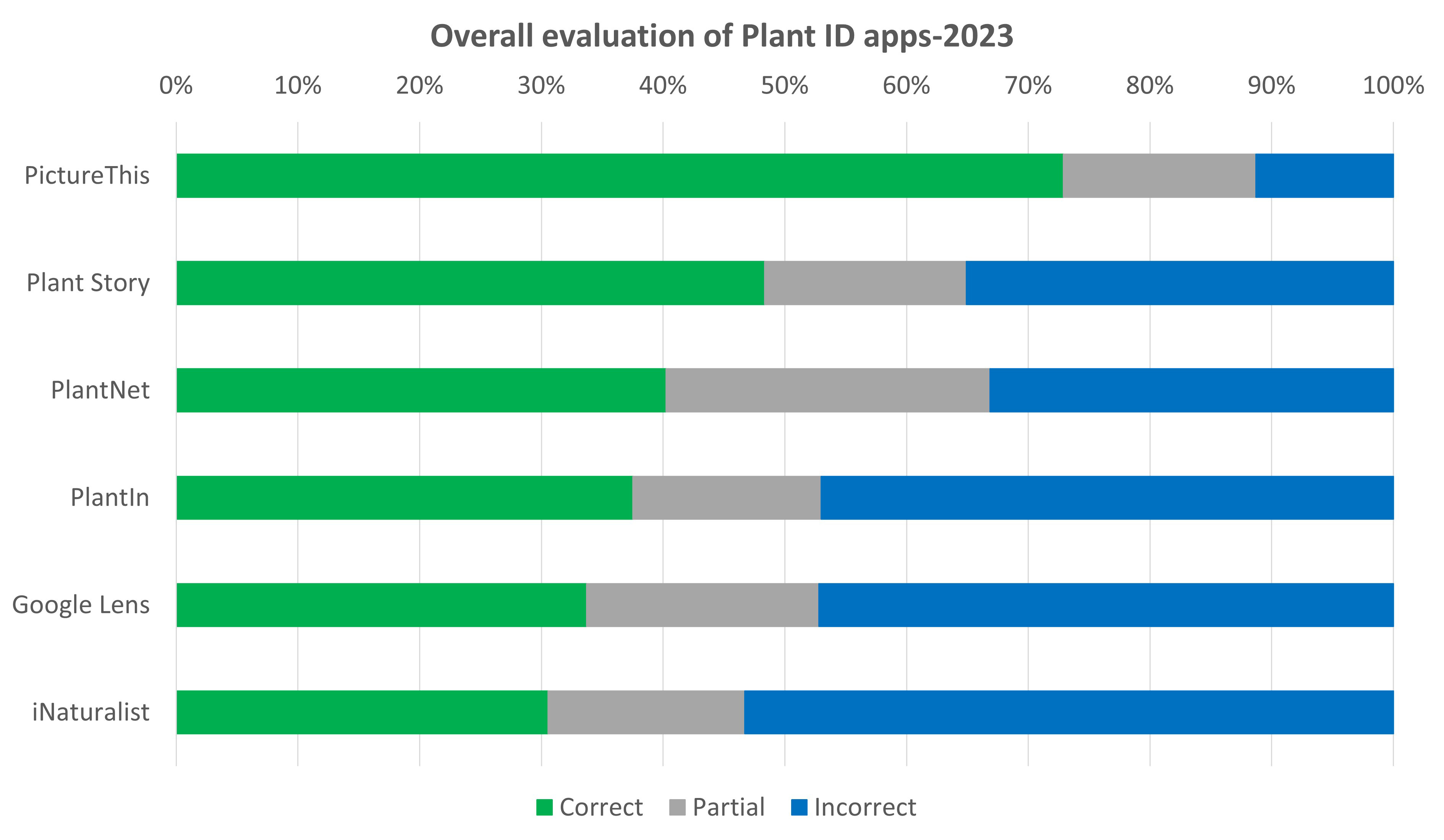
PictureThis has been the reigning champion of this test for six years in a row. In 2023, it successfully identified the plants present in the 177 photos taken at Beal Botanical Garden 73% of the time. Amaranthus seedlings were the most challenging category for this app to identify, with 46% accuracy (Figure 12). Vegetative grass (or grass-like) weeds and evergreen trees and shrubs were also challenging, with 57 and 59% accuracy, respectively. While PictureThis was less accurate in these categories, it should be noted that the other five apps evaluated were far worse by comparison; Amaranth seedlings were less than or equal to 35% accurate, vegetative grasses were less than or equal to 33% accurate, and evergreen trees/shrubs were less than or equal to 25% accurate.
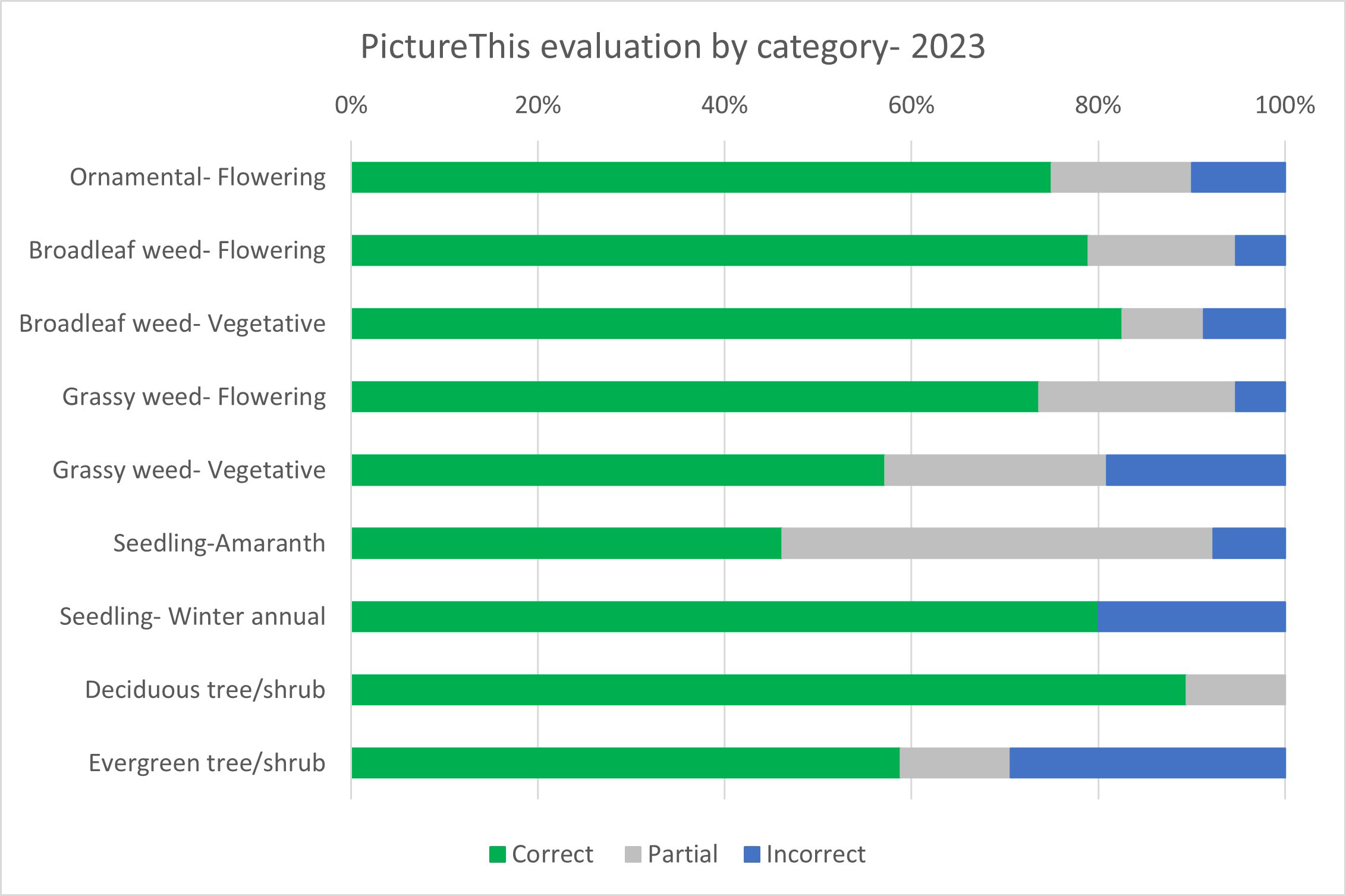
All of these categories are difficult to identify using whole plant images, as close inspection of fine structures is often required (e.g., ligules or florets for grass identification). In the last three years, since including the student’s data, we have seen increases in accuracy of PictureThis over time: greater than 5% increase in overall accuracy, about a 10% increase in vegetative grasses, and about a 15% increase for winter annual seedlings.
Of the 19 groups evaluating this app, 17 commented that it was their favorite because of both accuracy and ease of use. Users may appreciate the additional information provided with the identification in PictureThis, like frequently asked questions and environmental conditions for growth. PictureThis offers a free version of the app (tested here) and a paid version. The app is quite persistent in advertising the paid version, which some students found off-putting. Those who wish to trial the app for free need to pay attention and exit screens as needed.
PlantStory and PlantNet fell into the second tier of helpful plant identification apps. They both identified flowering ornamentals accurately more than 70% of the time, similar to PictureThis. PlantStory outperformed PlantNet in nearly every other category except the two tree/shrub categories (i.e., deciduous and evergreen). Student reactions to these apps were mixed. Some remarked that they were easy to use. A couple commented that they disliked limited uses before paid version (PlantStory).
iNaturalist was the runner up in 2020 but placed near the bottom of apps ranked from 2021 to 2023 when students were doing the assessments. Of the 19 groups evaluating this app in 2023, one commented that it was one of their favorite apps and 12 said it was one of their least favorite. In working with the groups and reading their comments, the issues seemed to stem from the app not being intuitive and a disinclination to read the directions. For example, it was not immediately clear how to upload photos to get identifications (two-step process) compared to the point-shoot-identify model that the other apps use. When I demonstrated the app for a couple groups that sought help, it improved their experience. With iNaturalist, it appears to be more critical to read the instructions and get to know the app before you use it. There is also a community feedback aspect to this app that we have not yet explored.
When using apps or internet searches to identify plants, it is always advised to check the identification with a reputable source (e.g., government or university-affiliated sites). Searching by the scientific name (i.e. Latin genus and species, e.g., Amaranthus retroflexus) will yield the most accurate results as common names can differ by region, environment, etc. (e.g., redroot pigweed versus rough amaranth). Some apps use location information when making the suggested identifications and some do not, therefore a suggested plant may not actually grow in the area where you took the photo. The U.S. Department of Agriculture (USDA) PLANTS Database is a good place to double check the known distribution of your identified plant. Michigan Flora is another good place to look; this shows county level distributions where herbarium specimens have been collected for each plant species since the 1800s. Numerous herbaria have begun to digitize their collections into searchable databases with images, such as the Consortium of Midwest Herbaria and Integrated Digitized Biocollections. To confirm the identification of an ornamental plant, a botanical garden resource, such as Missouri Botanical Garden’s Plant Finder, might be more appropriate (note the Missouri garden is in USDA Hardiness Zone 7a, Michigan ranges from 4a to 6b).
All apps tested since 2018: FlowerChecker, Garden Answers, Google Lens, ID Weeds (Apple Store, GooglePlay), iNaturalist, LeafSnap, PictureThis, Plantifier (Apple Store, GooglePlay), PlantIn, PlantNet, PlantSnap, PlantStory, Seek by iNaturalist, Turf Doctor, Weed ID (Apple Store, GooglePlay), Xarvio. Note that not all were tested each year.
Thank you to Angie Tenney for reviewing this article, as well as reviews in previous years by Matthew Chansler and Alan Prather.



 Print
Print Email
Email

